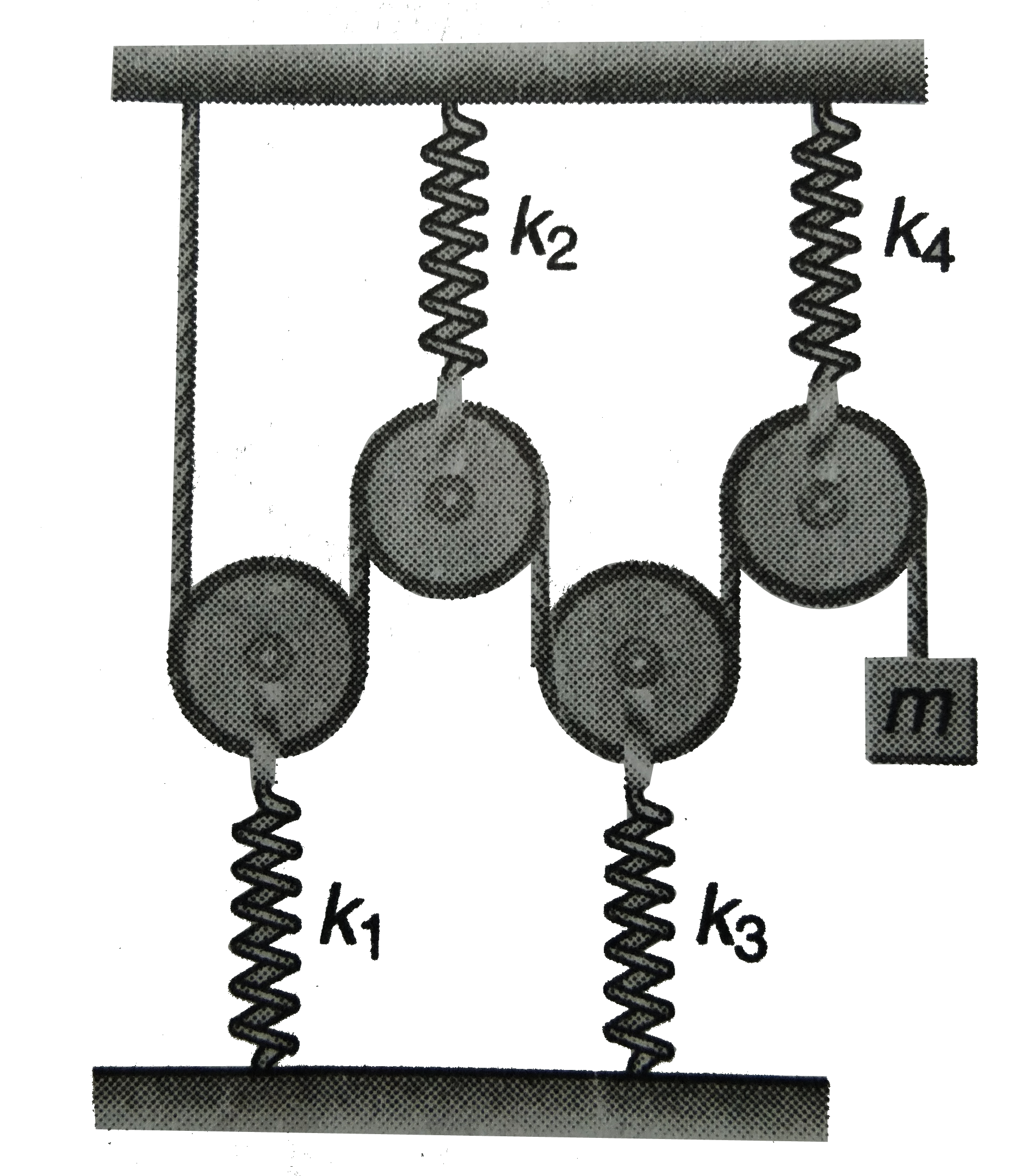The displacement of a particle varies with time as x=12sinωt−16sin3ωt (in cm) it is motion is S.H.M. then its maximum acceleration is Solution in Gujrati
The correct Answer is:A, B, C
x=12sinωt−16sin3ωt
=12sinωt−4(4sin3ωt)('∵4sin3θ=3sinθ−sin3θ)
=12sinωt−4(3sinωt−sin3ωt)
=12sinωt−12sinωt+4sin3ωt+4sin3ωt
⇒ motion is SHM with angular frequency 3ω
So amax=36ω2
Topper's Solved these Questions
- SIMPLE HARMONIC MOTIONBook:ALLEN Chapter:SIMPLE HARMONIC MOTIONExercise:Exercise-04 [B]
Explore 104 Videos
- SIMPLE HARMONIC MOTIONBook:ALLEN Chapter:SIMPLE HARMONIC MOTIONExercise:Exercise-05 [A]
Explore 39 Videos
- SIMPLE HARMONIC MOTIONBook:ALLEN Chapter:SIMPLE HARMONIC MOTIONExercise:Comprehension Base Questions (5)
Explore 3 Videos
- RACEBook:ALLEN Chapter:RACEExercise:Basic Maths (Wave Motion & Dopplers Effect) (Stationary waves & doppler effect, beats)
Explore 25 Videos
- TEST PAPERBook:ALLEN Chapter:TEST PAPERExercise:PHYSICS
Explore 4 Videos
Similar Questions
In the arrangement shown in figure, pulleys are light and spring are ideal. K1, k2, k3and k4 are force constant of the spring. Calculate period of small vertical oscillations of block of mass m.

View SolutionIf a spring has time period T, and is cut into (n) equal parts, then the time period of each part will be.
View SolutionTwo particles A and B are performing SHM along x and y-axis respectively with equal amplitude and frequency of 2cm and 1Hz respectively. Equilibrium positions of the particles A and B are at the coordinates [3cm,0] and (0,4cm) respectively. At t=0,B is at its equilibrium position and moving towards the origin, while A is nearest to the origin and moving away from the origin-
Equation of motion of particle A can be written as-
View SolutionThe frequency of a radar is 780 MHz. After getting reflected from an approaching aeroplane, the apparent frequency is more than the actual frequency by 2.6 kHz. The aeroplane has a speed of
View SolutionChoose the correct statement:
View SolutionThe displacement x of the body is motion is given by x=A sin (omega t+ theta) , Determine the time at which the displacement is maximum.
View SolutionThe displacement of a particle varies with time according to the relation y=asinωt+bcosωt.
View SolutionThe motion of a particle is given by x=Asinωt+Bcosωt. The motion of the particle is
View SolutionThe particle performing S.H.M. with epoch alpha displacement of motion is x = A sin omega t + alpha . The term (omegat+alpha) is known as
View SolutionThe displacement of a particle executing a S.H.M. is given by x= A "sin" omega t +A "cos" omega t . What is the amplitude of motion ?
View SolutionThe displacement of a particle performing S.H.M. is given by x=10 "sin"(omega t+ alpha) metre. If the displacement of the particle is 5m, then the phase of S.H.M. is
View SolutionThe displacement of a particle in S.H.M. is x = a sin omega t . Which of the following graph between displacement and time is correct :
View Solutionएक कण का समय t के साथ विस्थापन सूत्र x=12sinωt−16sin3ωt सेमी है। यदि यह गति सरल आवर्त गति हो , तो कण के त्वरण अधिकतम मान होगा।
View SolutionThe equation x= A sin omega t gives the relation between the time t and the corresponding displacement x of a moving particle where A and omega are constant. Prove that the acceleration of the particle is proportional to its displacement and is directed opposite to it.
View SolutionThe linear displacement (y) of a particle varies with time as y = (a sin omega t + b cos omega t) . State whether the particle is executing SHM or not.
View SolutionThe motion of a particle is given by x=Asinωt+Bosωt. The motion of the particle is
View Solution

